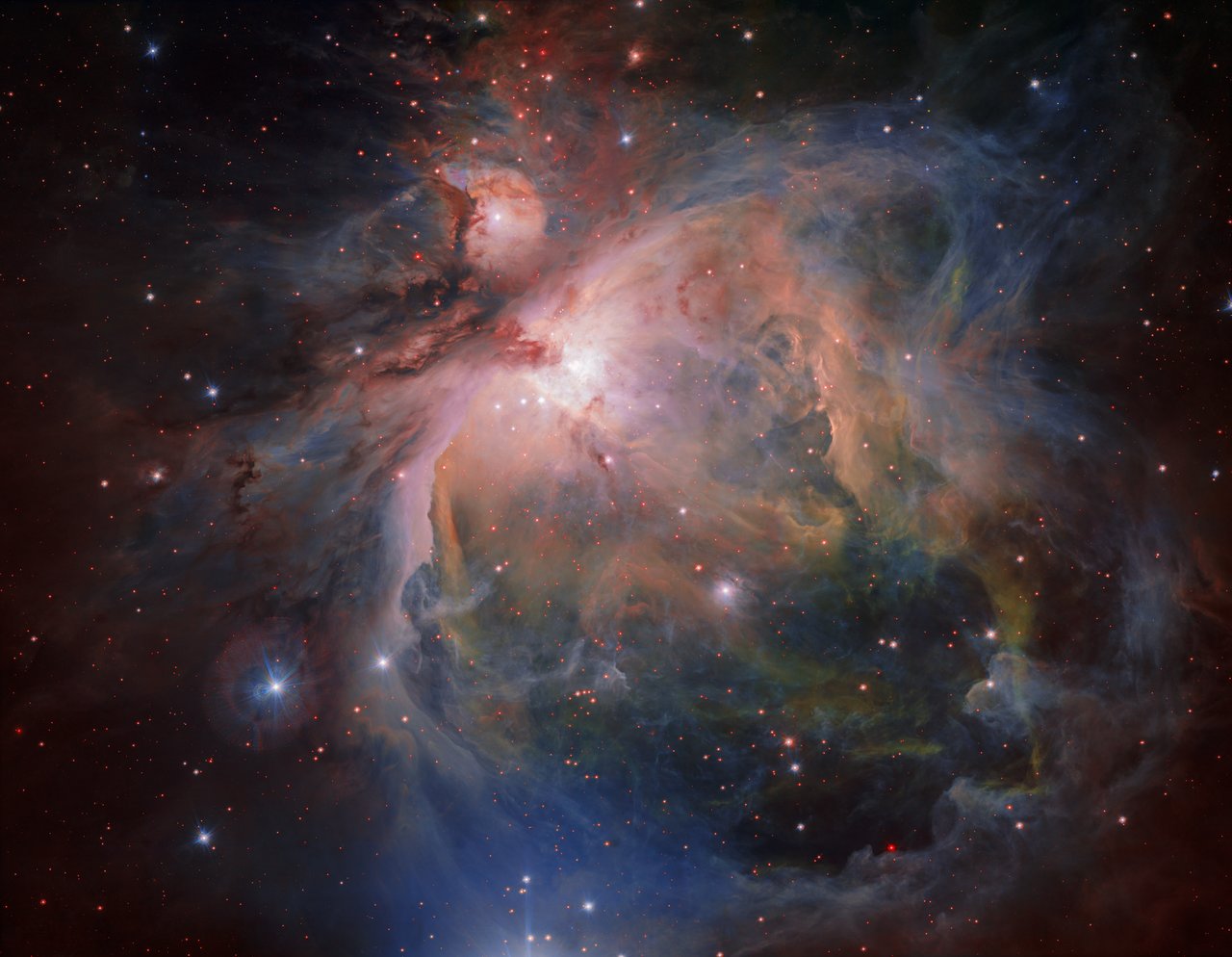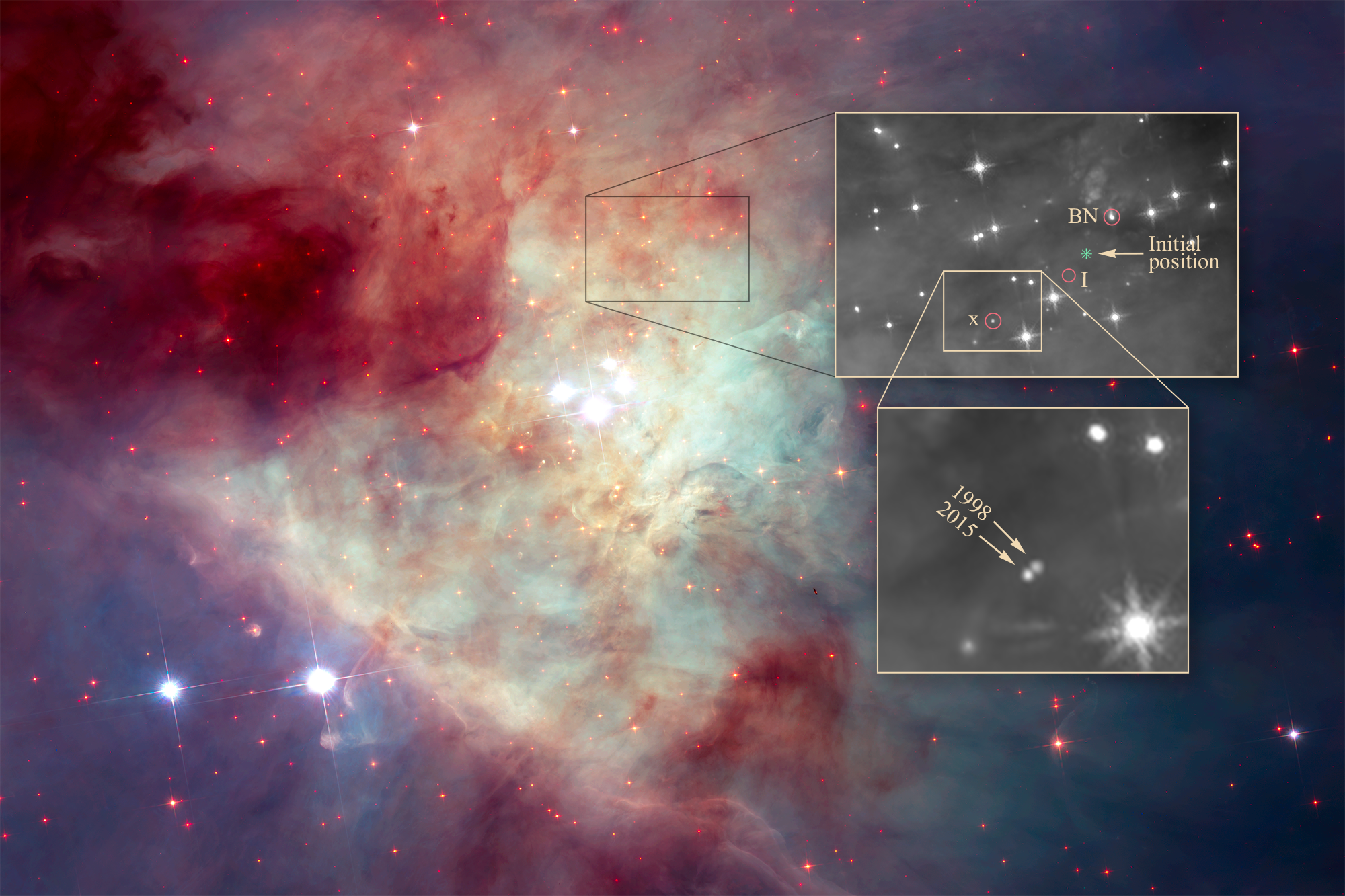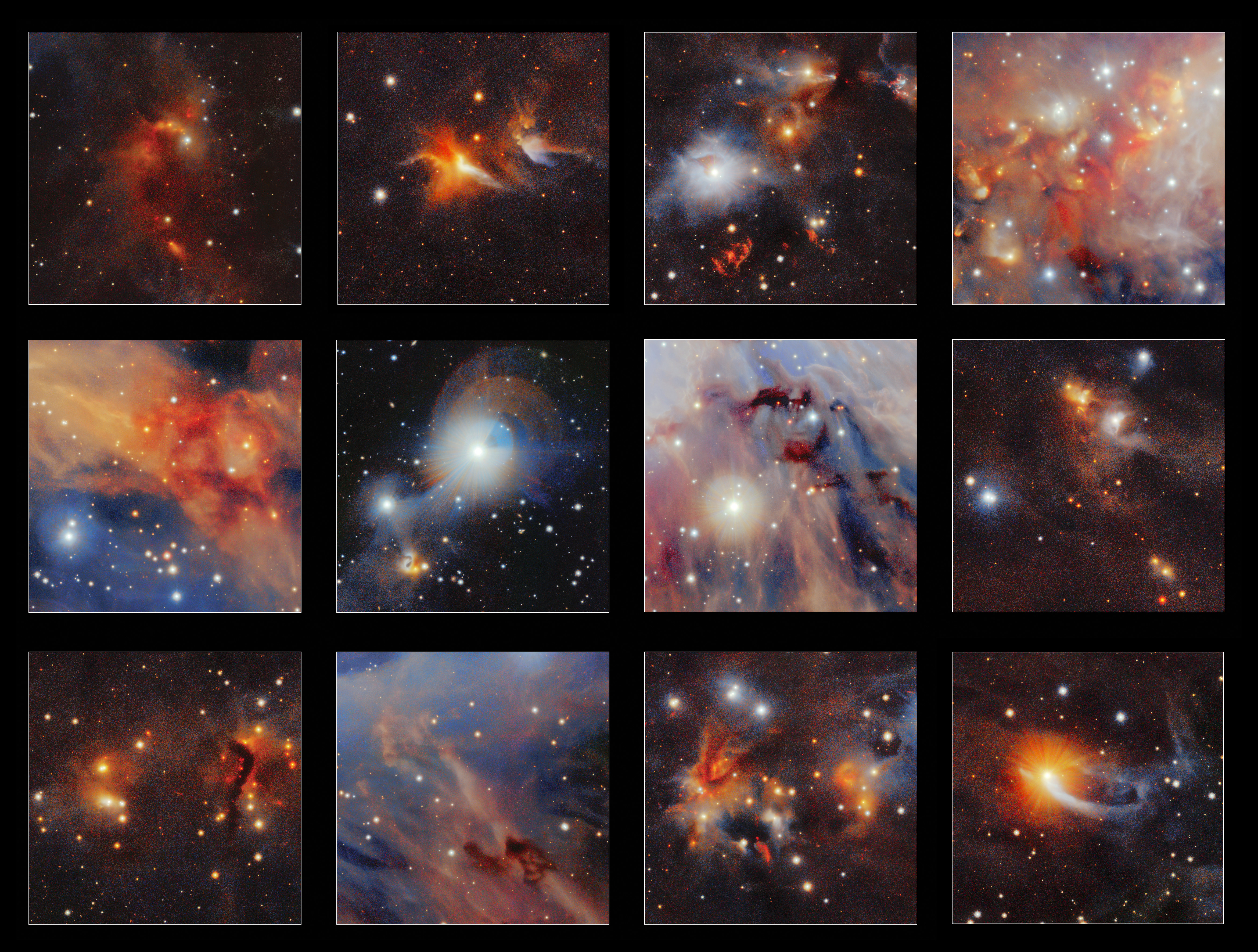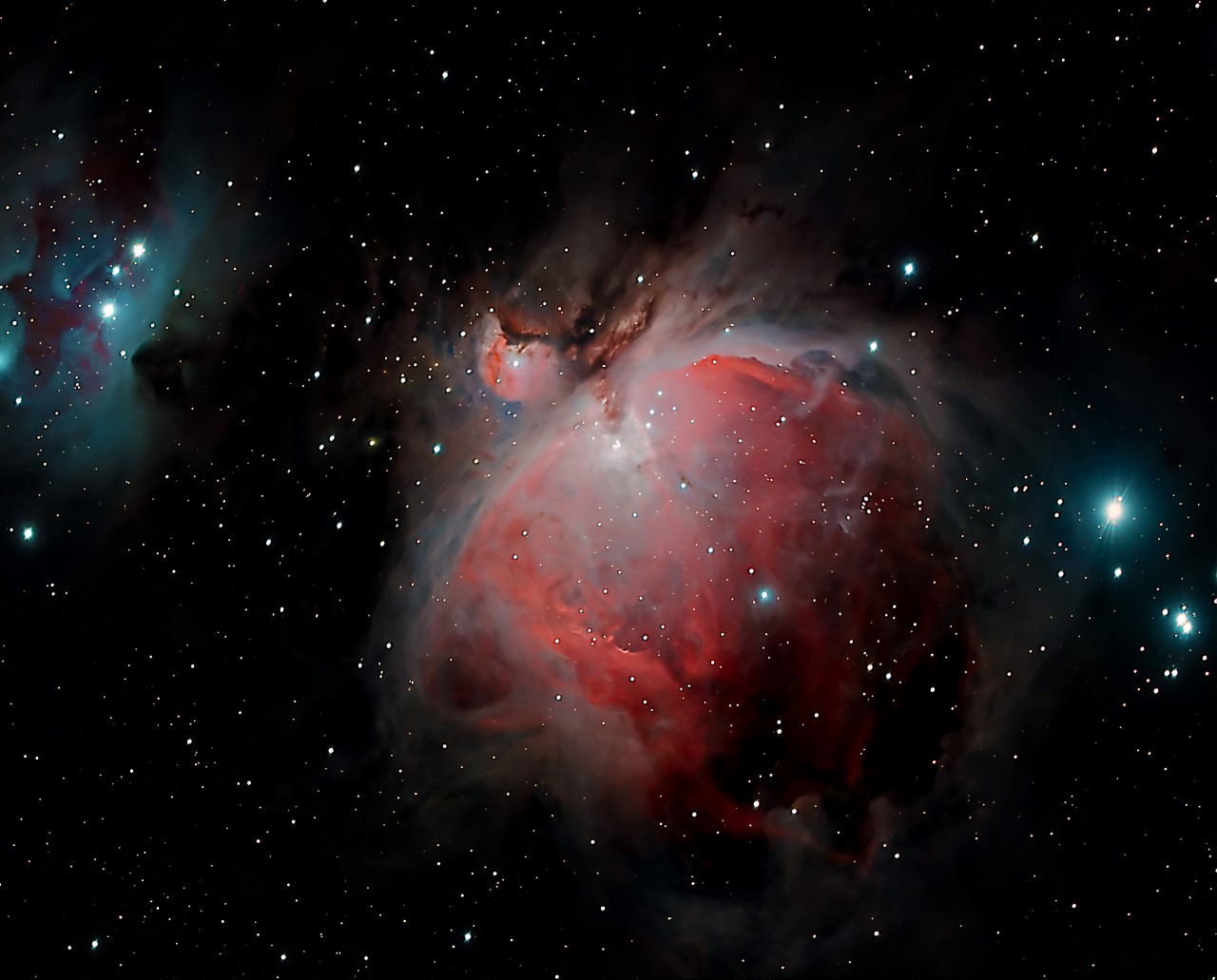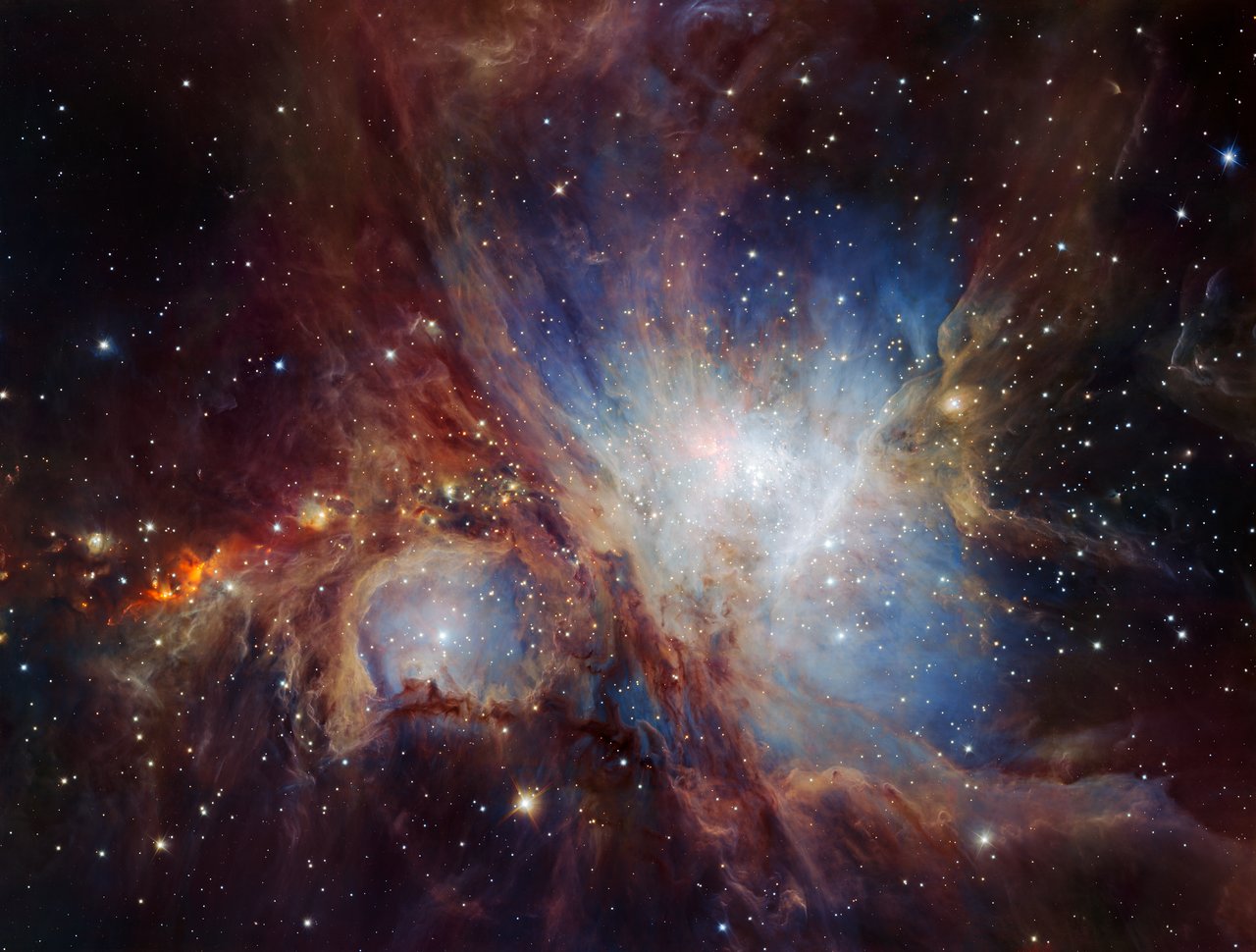The Splendor of the Orion Nebula (Photos)
Orion Nebula Seen by OmegaCAM
The European Southern Observatory's VLT Survey Telescope used its OmegaCAM to capture this detailed view of the Orion Nebula and its collection of young stars. The object is 1,350 light-years from Earth and hosts one of the closest stellar nurseries.
Orion Molecular Cloud: Composite Image
A composite image of several young stars and remnant streams of gas and dust ejected from the Orion Molecular Cloud 1 following the collision of two protostars 500 years ago. [Full Story: Violent Star Collision Triggers Cosmic Fireworks Display]
Orion nebula stars BN and I
The stars labeled "BN" and "I" in the Orion nebula (near the Trapezium Cluster, visible at center) were discovered flying away from each other over the course of decades. Now, researchers have found a third star, labeled "X," fleeing the same point of origin — you can see how "X" changed over time in the second inset box. [Full Story: Young Runaway Stars' Lost Sibling Found]
Orion's Dusty Heart
Photographer Miguel Claro captured this view of the Orion Nebula from the Cumeada Observatory in Portugal.
The Orion A molecular cloud from VISTA
This image from the Visible and Infrared Survey Telescope for Astronomy (VISTA) at ESO's Paranal Observatory in Chile is part of the largest infrared high-resolution mosaic of Orion ever created. It includes the Orion A molecular cloud, a massive stellar nursery that lies about 1,350 light-years from Earth.
Highlights from VISTA image of Orion A
This collection of highlights is taken from a new infrared image of the Orion A molecular cloud from VISTA.
Orion Nebula
Astrophotographer Marc Juneau took this picture of the Orion nebula from his backyard in San Pedro de Alcántara on the southern coast of Spain in March 2016. The Orion nebula lies more than 1,300 light-years away in the constellation Orion, just south of Orion's belt. It's bright enough to see with the naked eye, and looks like a star in the middle of Orion's sword.
Breaking space news, the latest updates on rocket launches, skywatching events and more!
Orion Nebula in Infrared
This new view of the Orion Nebula, built from multiple exposures of the HAWK-1 infrared camera on the European Southern Observatory's (ESO) Very Large Telescope in Chile, is the deepest view ever of the region, ESO officials said in a statement. The view revealed 10 times more very faint, low-mass objects (planet-size and brown dwarfs) than previously known.
Orion Nebula in Infrared: Close-Ups
Close-ups of particular features in the European Southern Observatory's new view of the Orion Nebula, taken with the HAWK-1 infrared camera on the observatory's Very Large Telescope in Chile.

Space.com is the premier source of space exploration, innovation and astronomy news, chronicling (and celebrating) humanity's ongoing expansion across the final frontier. Originally founded in 1999, Space.com is, and always has been, the passion of writers and editors who are space fans and also trained journalists. Our current news team consists of Editor-in-Chief Tariq Malik; Editor Hanneke Weitering, Senior Space Writer Mike Wall; Senior Writer Meghan Bartels; Senior Writer Chelsea Gohd, Senior Writer Tereza Pultarova and Staff Writer Alexander Cox, focusing on e-commerce. Senior Producer Steve Spaleta oversees our space videos, with Diana Whitcroft as our Social Media Editor.
